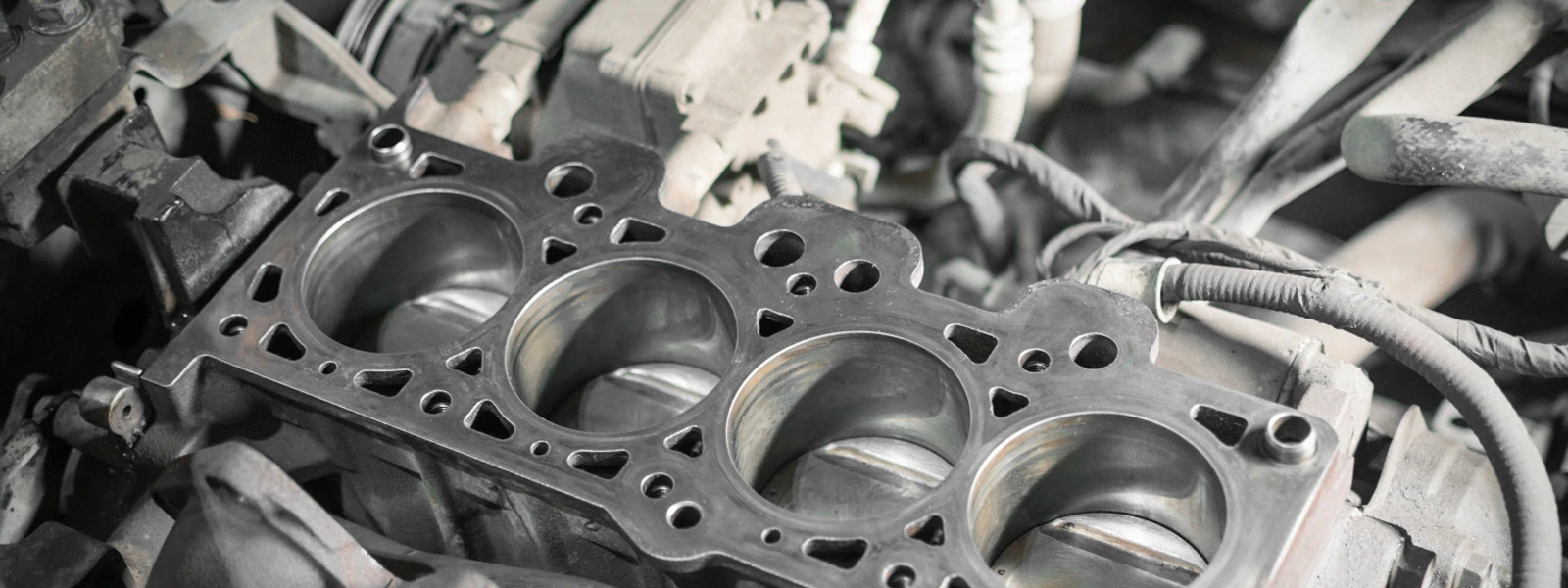
Demystifying the P0304 Code: Understanding and Resolving Cylinder 4 Misfires

Demystifying the P0304 Code: Learn about and address cylinder 4 misfires effectively to maintain engine performance. Understand symptoms, diagnostic steps, common fixes, and preventative maintenance. Ensure a smooth driving experience with prompt action.
if you encounter the P0304 engine code, it's crucial to address the underlying cause promptly to avoid compromising your driving experience. if your check engine light is illuminated and your oBD-iI scanner detects a P0304 code, follow the guide below to resolve it effectively.

Understanding the P0304 code
the P0304 code indicates a misfire in cylinder 4 of the engine, which is crucial for diagnosing engine issues. it's triggered by the eCM when abnormal combustion or lack of combustion is detected. potential causes include ignition system problems, fuel system issues, vacuum leaks, and mechanical issues like low compression or valve problems. identifying these causes is essential for effective diagnosis and repair.
Symptoms of a cylinder 4 misfire
When the P0304 code is present, several common symptoms may occur, signaling a cylinder 4 misfire. These symptoms include:
1. Rough idling: The engine may idle roughly or unevenly, causing noticeable vibrations throughout the vehicle.
2. Engine hesitation: Acceleration may feel hesitant or jerky, especially when trying to accelerate quickly or climb hills.
3. Loss of power: The vehicle may experience a decrease in power, making it feel sluggish or unresponsive when accelerating.
4. Increased emissions: A cylinder 4 misfire can lead to an increase in emissions, causing the vehicle to fail emissions tests or produce visible smoke from the exhaust.
Recognizing these symptoms is crucial as they indicate potential issues with engine performance and efficiency. Taking prompt action to address the underlying cause of the misfire can prevent further damage to the engine and ensure the continued safe operation of the vehicle.
If you experience any of these symptoms or if the check engine light illuminates, it's essential to have the vehicle inspected by a qualified mechanic or automotive technician. Ignoring these symptoms can lead to more severe engine problems and costly repairs down the line. By addressing the issue promptly, you can maintain the reliability and performance of your vehicle while minimizing the risk of further damage.
Diagnostic process
The diagnostic process for cylinder 4 misfires:
1. Retrieve trouble codes: Use an OBD-II scanner to retrieve the trouble codes stored in the vehicle's ECM. Look for the P0304 code indicating a misfire in cylinder 4.
2. Visual inspection: Inspect ignition components, including spark plugs, ignition coils, and spark plug wires, for signs of wear, damage, or corrosion. Check fuel system components such as fuel injectors, fuel lines, and fuel pressure regulators for leaks or clogs.
3. Examine vacuum lines and hoses for cracks, leaks, or disconnected connections that could lead to vacuum leaks.3. Ignition system testing: Test the resistance of spark plugs and ignition coils using a multimeter to ensure they are within manufacturer specifications. Perform a spark test to verify that spark plugs and ignition coils are producing adequate sparks.
4. Fuel system testing: Check fuel pressure using a fuel pressure gauge to ensure it meets manufacturer specifications. Conduct a fuel injector flow test to assess the performance of fuel injectors and identify any clogged or malfunctioning injectors.
5. Compression test: Perform a compression test on cylinder 4 to assess the health of the engine's internal components. Compare compression readings across all cylinders to identify any significant discrepancies that could indicate engine problems.
6. Additional testing (if necessary): Use a smoke machine to detect vacuum leaks by pressurizing the intake system and observing for smoke leaks. Conduct a cylinder leak-down test to assess the integrity of cylinder 4 and identify any leaks in the combustion chamber or piston rings.

By following these steps, vehicle owners can systematically diagnose cylinder 4 misfires and identify the underlying cause of the issue. It's essential to use appropriate diagnostic tools and techniques to ensure accurate diagnosis and effective repair. If uncertain or unable to perform these tests, consulting a qualified mechanic or automotive technician is recommended.
Common fixes for cylinder 4 misfires
Replace spark plugs and ignition coils: Worn spark plugs or faulty ignition coils can cause misfires. Replace both in cylinder 4 with quality replacements.
1. Check and clean/replace fuel injectors: Clogged or malfunctioning fuel injectors may be the culprit. Clean or replace the fuel injector(s) in cylinder 4 as needed.
2. Address vacuum leaks: Vacuum leaks disrupt the air-fuel mixture, leading to misfires. Inspect and repair any leaks in the intake manifold, hoses, or gaskets.
3. Use quality replacement parts: Opt for OEM or reputable aftermarket parts to ensure compatibility and reliability.
4. Follow proper installation procedures: Install replacement parts according to manufacturer guidelines to avoid damage and ensure proper functioning.
5. Test drive and re-scan: After repairs, test drive the vehicle to confirm the issue is resolved. Re-scan the ECM to ensure trouble codes are cleared.
Following these steps helps effectively resolve cylinder 4 misfires, restoring engine performance and preventing further issues.

Preventative Maintenance for Cylinder 4 Misfires
1. Regular Inspection: Periodically check ignition components, fuel system, and vacuum lines for wear or damage. Clean or replace spark plugs, ignition coils, and fuel injectors as needed.
2. Scheduled Maintenance: Follow the manufacturer's maintenance schedule for tune-ups, including spark plug replacement and fuel system cleaning.
3. Quality Fuel and Oil: Use high-quality fuel and engine oil to maintain engine cleanliness and performance.
4. Engine Cooling: Ensure proper cooling system function to prevent overheating and misfires.
5. Air Filter: Replace air filters regularly to maintain proper airflow to the engine.6. Driving Habits: Drive smoothly and avoid aggressive driving to reduce strain on the engine.
6. Regular Scans: Periodically scan for trouble codes using an OBD-II scanner and address any issues promptly.
Following these maintenance practices helps prevent cylinder 4 misfires and ensures long-term engine reliability.

Conclusion
In conclusion, addressing cylinder 4 misfires promptly and effectively is crucial for maintaining engine performance and longevity. By understanding the P0304 code, recognizing symptoms, and utilizing diagnostic tools, owners can identify and resolve issues efficiently. Common fixes include replacing spark plugs, ignition coils, and fuel injectors, while preventative maintenance helps prevent future misfires. Taking proactive steps ensures optimal engine performance and a smoother driving experience.
A-Premium high-quality OBD-II scanner is one that offers compatibility with various vehicle models and protocols, comprehensive diagnostic functions, a user-friendly interface, quick and accurate results, updateability, and durable build quality. Explore our extensive selection of obd2 scanners to add the perfect finishing touch to your vehicle restoration project.











